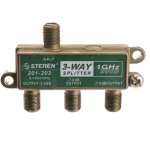Hey guys, I was hoping someone could give me some clarity on the Gaming port priority feature Assus offers on their routers.
From my understanding, Port 1 on the LAN is also the gaming port which will prioritize traffic for gaming. This part I'm clear about, what I'm unclear about is, is it on automatically and not able to physically be disabled? Reason being is, I don't have a single device connected to LAN 1, that's where I connected the switch with all of my wired devices. I raise the question because of the following:
When I'm am streaming internet content say on one of my Apple TVs, and then do something else, at the same time, say run a speed test on the Mac, or a wireless device, the speedtest is slower, and I don't remember this ever happening on the Non Asus routers I've used that didn't have this game port feature. Since I don't need the feature, I've made sure to disable all UPNP, and game features in the web UI.
The settings I've disabled are as follows:
WAN enable UPNP set to disabled
GFORCE Now UPNP set to disabled
UPNP Media server set to disabled.
ALL visible forms of QOS are also disabled, as well as AI Protection, any kind of parental controls, or traffic settings.
I've also noticed this only seems to happen when streaming internet content, not when streaming over the LAN say from Plex, to one of the TVs.
When I say the speed on the secondary device is slower, I'm not talking real drastically slower, I'm talking dropping from betwee 920 to 940 Mbps down to somewhere in the 800's to high 700's.
So, my last questions are:
1. To avoid triggering this function, would using a different LAN port, other than 1, be the solution, or have I missed a setting? Thanks
It's not a huge issue, and it doesn't seem to affect network performance on the surface, I just happened to notice it when testing speeds after I had some real activity going on the network to see how much bandwidth I was actually pulling in the different things I might do simultaneously.
From my understanding, Port 1 on the LAN is also the gaming port which will prioritize traffic for gaming. This part I'm clear about, what I'm unclear about is, is it on automatically and not able to physically be disabled? Reason being is, I don't have a single device connected to LAN 1, that's where I connected the switch with all of my wired devices. I raise the question because of the following:
When I'm am streaming internet content say on one of my Apple TVs, and then do something else, at the same time, say run a speed test on the Mac, or a wireless device, the speedtest is slower, and I don't remember this ever happening on the Non Asus routers I've used that didn't have this game port feature. Since I don't need the feature, I've made sure to disable all UPNP, and game features in the web UI.
The settings I've disabled are as follows:
WAN enable UPNP set to disabled
GFORCE Now UPNP set to disabled
UPNP Media server set to disabled.
ALL visible forms of QOS are also disabled, as well as AI Protection, any kind of parental controls, or traffic settings.
I've also noticed this only seems to happen when streaming internet content, not when streaming over the LAN say from Plex, to one of the TVs.
When I say the speed on the secondary device is slower, I'm not talking real drastically slower, I'm talking dropping from betwee 920 to 940 Mbps down to somewhere in the 800's to high 700's.
So, my last questions are:
1. To avoid triggering this function, would using a different LAN port, other than 1, be the solution, or have I missed a setting? Thanks
It's not a huge issue, and it doesn't seem to affect network performance on the surface, I just happened to notice it when testing speeds after I had some real activity going on the network to see how much bandwidth I was actually pulling in the different things I might do simultaneously.



